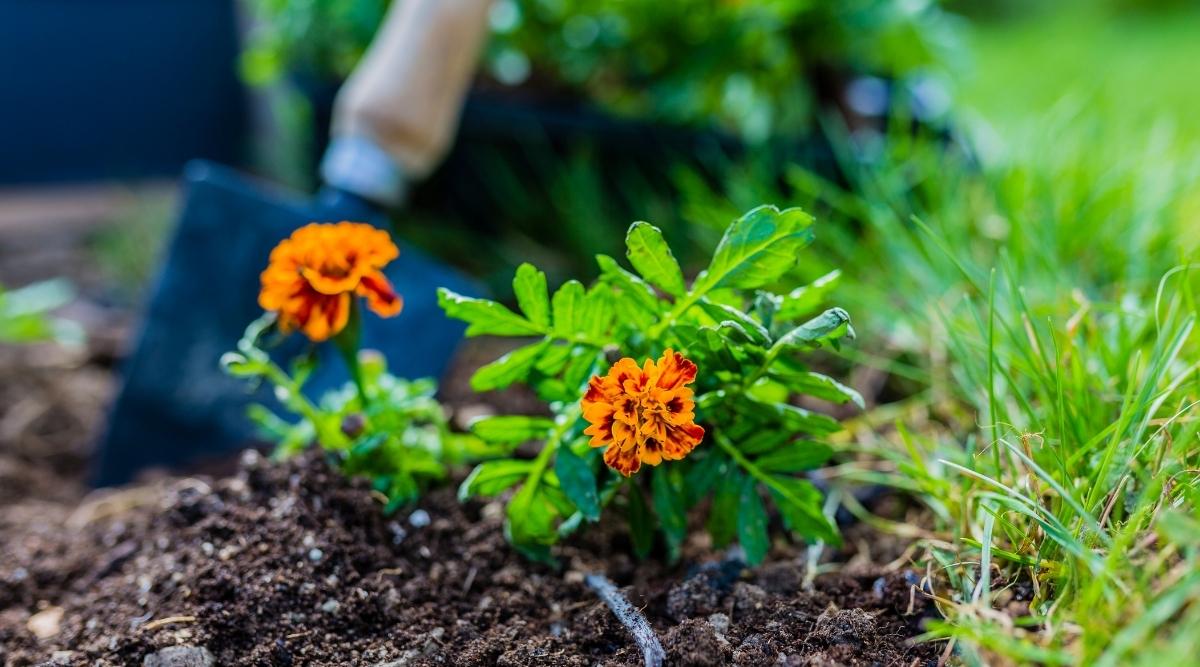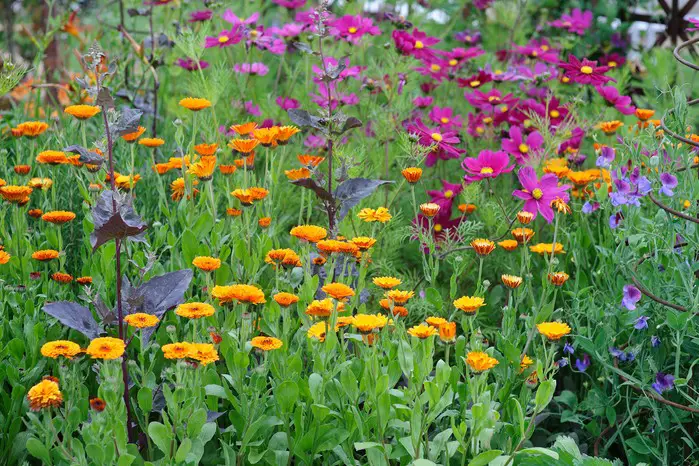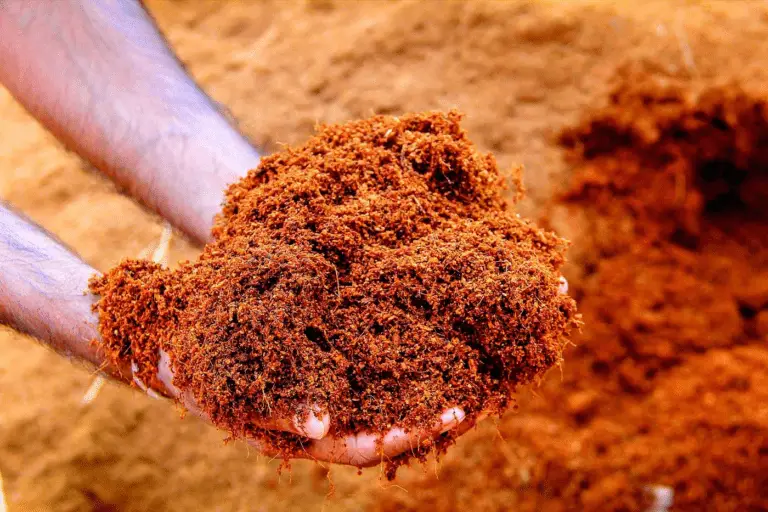Marigold Varieties: 30 Types to Vibrant Your Garden
Table of Contents
Different colors of Marigold Varieties
Marigold Varieties, known for their vibrant and eye-catching hues, come in a variety of colors that can brighten up any garden or landscape. From the classic golden yellows to fiery oranges and delicate creams, marigolds offer a spectrum of colors to suit every taste and preference. These colorful blooms are not only beautiful to look at but also serve practical purposes in the garden, making them a popular choice for gardeners worldwide.
Different colors of marigolds can evoke various moods and aesthetics in a garden setting. The warm tones of orange and yellow marigolds bring a sense of cheerfulness and energy, making them perfect for adding a pop of color to any garden bed or container. On the other hand, the softer hues of cream and pale yellow marigolds lend a touch of elegance and sophistication to garden designs, creating a serene and calming atmosphere. Whether you prefer bold and bright colors or more subtle and understated tones, there is a marigold shade to suit every garden style and preference.
Popular varieties of Marigold Varieties
Marigolds are a popular choice among gardeners for their vibrant colors and easy maintenance. Some of the most popular varieties of marigolds include French marigolds, African marigolds, and signet marigolds. French marigolds, also known as Tagetes patula, are compact plants with small flowers in shades of yellow, orange, and red. They are perfect for borders, containers, and companion planting. African marigolds, or Tagetes erecta, are taller with larger blooms in shades of yellow and orange. They make excellent cut flowers and add a bold pop of color to any garden. Signet marigolds, scientifically called Tagetes tenuifolia, have delicate, lacy foliage and small, single flowers in shades of yellow and orange. They are great for edging, containers, and herb gardens.

Another well-loved variety is the Mexican marigold, also known as Tagetes lucida. It is valued not only for its ornamental qualities but also for its culinary and medicinal uses. This variety has a unique anise-like fragrance and is often used fresh or dried in culinary dishes or teas. With its bright yellow and orange flowers, Mexican marigold adds a cheerful touch to gardens while also serving practical purposes. Overall, each variety of marigold brings its own charm and benefits to the garden, making them a versatile choice for both beginner and experienced gardeners alike.
Characteristics of different Marigold Varieties
Marigolds, with their vibrant blooms and distinct characteristics, come in various types that each offer unique qualities. The French marigold (Tagetes patula), known for its compact size and wide color range of yellow, orange, and red hues, is a popular choice for borders and containers. This variety is also prized for its ability to repel pests in the garden. In contrast, the African marigold (Tagetes erecta) stands tall with large, showy flowers in shades of yellow and orange, making it a striking addition to flower beds and cutting gardens.
Another well-loved marigold type is the signet marigold (Tagetes tenuifolia), which features delicate, lacy foliage and small, dainty flowers in shades of orange and yellow. These plants are excellent for edging, rock gardens, and attracting pollinators with their sweet fragrance. Each marigold type brings its own charm and benefits to the garden, making them versatile options for both seasoned gardeners and beginners alike.
The table shows some of the major types of marigolds and theor characteristics:
| Marigold Variety | Flower Size | Flower Color | Blooming Season | Special Features |
|---|---|---|---|---|
| French Marigold | Small to medium | Yellow, orange, red | Summer to fall | Compact growth habit, often used for edging borders |
| African Marigold | Large | Yellow, orange | Summer to fall | Tall and sturdy stems, ideal for cut flowers |
| Signet Marigold | Small | Yellow, orange | Spring to fall | Fine, lacy foliage, excellent for containers |
| Mexican Marigold | Medium to large | Yellow, orange | Summer to fall | Strong fragrance, often used in companion planting |
| Calendula Marigold | Medium | Yellow, orange, apricot | Spring to fall | Edible flowers, medicinal properties |
Growing requirements for Marigold Varieties
Marigolds are versatile flowers that thrive in various conditions, making them a popular choice for many gardeners. When it comes to growing requirements, marigolds prefer well-draining soil with a slightly acidic to neutral pH. They are not too picky about soil quality, but it’s essential to ensure good drainage to prevent waterlogging, which can lead to root rot.
In terms of sunlight needs, marigolds are sun-loving plants that thrive in full sun, requiring at least 6-8 hours of direct sunlight per day. Adequate sunlight is crucial for the healthy growth and blooming of marigolds, so be sure to plant them in a sunny spot in your garden to ensure vibrant flowers throughout the season.
Best soil for Marigold Varieties
Marigolds are adaptable plants that can thrive in various soil conditions, but they prefer well-draining soil rich in organic matter. A loamy soil with a pH level between 6.0 and 7.0 is ideal for marigolds, ensuring proper nutrient uptake and healthy growth. Sandy soils can be improved by adding compost or organic matter to enhance moisture retention and fertility, while clay soils should be amended with sand or perlite to improve drainage.
When planting marigolds, it is important to avoid waterlogged soil, as it can lead to root rot and other diseases. To prevent waterlogging, consider adding perlite or sand to the soil mix to improve aeration and drainage. Additionally, regular soil testing can help determine any deficiencies in nutrients, allowing gardeners to amend the soil with suitable fertilizers or organic matter to support optimal growth and blooming of Marigold Varieties plants.

Sunlight needs for Marigold Varieties
Marigold Varieties are known for their adaptability and resilience, making them a popular choice for gardeners of all levels. When it comes to sunlight needs, Marigold Varieties thrive in full sun, which typically means at least 6 hours of direct sunlight per day. This abundant sunlight helps marigolds produce vibrant blooms and maintain a compact, bushy growth habit.
In addition to full sun, Marigold Varieties can tolerate some light shade, but they may not bloom as profusely in shadier spots. It’s essential to consider the sun exposure in your garden when choosing a location for planting Marigold Varieties. By providing the optimal amount of sunlight, you can ensure that your marigold plants reach their full potential and reward you with an abundance of colorful flowers throughout the growing season.
Watering tips for Marigold Varieties
Marigold Varietiesare known for their ability to thrive in various conditions, including warm and dry environments. When it comes to watering these vibrant flowers, it is crucial to strike a balance to ensure their health and growth. Overwatering can lead to root rot, while underwatering can cause wilting and stunted growth.
To determine when to water your Marigold Varieties, check the soil moisture level by inserting your finger into the soil about an inch deep. If it feels dry to the touch, it’s time to water. It’s essential to water the base of the plant rather than overhead to prevent issues like powdery mildew. Additionally, aim to water in the early morning to allow foliage to dry properly and reduce the risk of fungal diseases.
Common pests and diseases for Marigold Varieties
Marigolds are generally resilient plants, but they can still fall victim to common pests and diseases. One of the most common pests that Marigold Varieties may encounter is aphids. These small insects feed on the sap of the plant, causing leaves to curl and yellow. Another pest to watch out for is spider mites, which are tiny arachnids that suck the juices from leaves, leading to a stippled appearance.
In terms of diseases, Marigold Varieties can be susceptible to powdery mildew. This fungal disease presents as a white powdery substance on the leaves and stems, hindering photosynthesis and overall plant health. Additionally, root rot can affect Marigold Varieties if they are overwatered or planted in poorly draining soil, leading to wilting and yellowing of the foliage. Implementing proper pest control measures and maintaining optimal growing conditions can help prevent these issues and keep marigolds thriving in your garden.
Benefits of planting Marigold Varieties in your garden
Marigolds are not only beautiful additions to your garden but also offer numerous benefits that make them a must-have plant for any gardener. One of the key advantages of planting marigolds is their ability to repel pests such as aphids, mosquitoes, and nematodes due to their strong scent that deters these unwanted visitors. This natural pest control method can help protect other plants in your garden and reduce the need for harmful chemical pesticides.
Additionally, marigolds are known for their ability to attract beneficial insects like ladybugs and hoverflies, which are essential for pollination and maintaining a healthy ecosystem in your garden. By planting marigolds, you can create a more balanced and thriving environment that promotes biodiversity and boosts the overall health of your plants.
The table below shows us how marigold varieties can be beneficial for us:
| Benefit | Description |
|---|---|
| Pest Repellent | Marigolds, especially French and African varieties, emit a scent that repels many garden pests like aphids, whiteflies, and nematodes, reducing the need for chemical pesticides. |
| Companion Planting | Marigolds attract beneficial insects such as ladybugs and hoverflies, which prey on aphids and other pests, promoting a healthier garden ecosystem. |
| Soil Improvement | Marigold roots excrete chemicals that suppress nematodes and improve soil structure, enhancing soil fertility and reducing the risk of soil-borne diseases in subsequent plantings. |
| Colorful Display | With their vibrant hues of yellow, orange, and red, marigolds add color and visual appeal to garden beds, borders, and containers, enhancing the overall beauty of the landscape. |
| Continuous Blooming | Different marigold varieties bloom from spring to fall, providing a long-lasting display of flowers throughout the growing season, ensuring your garden remains vibrant and attractive. |
| Cut Flower Production | African marigolds produce large, long-lasting blooms suitable for cut flower arrangements, allowing you to enjoy their beauty indoors and share them with friends and family. |
Companion plants for marigolds
Marigolds are versatile plants that not only add vibrant color to a garden but also offer benefits for surrounding vegetation. When choosing companion plants for marigolds, it’s crucial to consider those that complement their growth habits and soil requirements. In general, marigolds thrive when planted alongside vegetables such as tomatoes, cucumbers, and squash due to their ability to repel pests like nematodes and aphids. Additionally, herbs like basil and oregano can enhance the aromatic profile of a marigold bed while attracting pollinators like bees and butterflies.
Furthermore, the sturdy nature of marigolds makes them suitable companions for delicate plants that may benefit from their protective properties. For instance, planting marigolds near roses can help deter pests and provide a visual contrast that brightens up the garden bed. When strategically paired with compatible plants, marigolds can create a harmonious ecosystem that promotes biodiversity and encourages healthy growth for all species involved.
Tips for planting marigolds from seeds
Marigolds are easy-to-grow flowering plants that thrive from seeds. When planting marigold seeds, ensure the soil is well-draining and mix in some compost for nutrients. Sow the seeds about 1 inch apart and cover them lightly with soil. Water the seeds gently and keep the soil moist but not waterlogged to encourage germination. Once the seeds sprout, thin them out to provide enough space for the plants to grow and develop properly.
Marigold seeds typically germinate within 4-14 days, depending on the variety and environmental conditions. To promote healthy growth, place the seedlings in a sunny location with at least 6 hours of sunlight daily. Ensure the soil is kept consistently moist but not soggy to prevent issues like root rot. As the seedlings grow, consider applying a balanced fertilizer to support their nutrient needs and encourage vibrant blooms. Remember to protect the young plants from pests and diseases by practicing good garden hygiene and monitoring their growth regularly.
How to care for marigold plants
Marigold plants are relatively easy to care for, requiring minimal maintenance to thrive. To ensure healthy growth and abundant blooms, it is essential to provide them with well-draining soil that is rich in organic matter. Marigolds prefer full sunlight, so placing them in an area where they will receive at least six hours of sunlight daily is crucial for their development.
When watering marigolds, it is important to avoid over-watering, as they are susceptible to root rot in waterlogged conditions. Allow the top inch of soil to dry out between waterings, and water at the base of the plant to prevent moisture-related diseases. Deadheading spent blooms regularly will stimulate further flower production and keep the plant looking tidy. By following these simple care tips, you can enjoy vibrant marigold blooms throughout the growing season.
Uses of marigolds in landscaping
Marigolds are not only beautiful flowers to admire in a garden but also serve a practical purpose in landscaping. Their vibrant colors and hardy nature make them a popular choice for edging walkways and borders, adding a lively touch to any outdoor space. Marigolds also work well in mass plantings, creating a sea of golden, orange, or red hues that can brighten up any dull corner of a garden.
In addition to their aesthetic appeal, marigolds are known for their ability to repel pests such as aphids, mosquitoes, and nematodes. This natural pest control property makes them a valuable addition to vegetable gardens and other outdoor areas where unwanted insects may pose a threat to plants. By strategically planting marigolds around susceptible crops or sensitive areas, gardeners can help protect their plants without the need for harmful chemicals, promoting a healthier and more eco-friendly environment.
Harvesting marigold flowers
When it comes to harvesting marigold flowers, timing is crucial for optimal blooms and longevity. Marigolds are best harvested in the morning when the petals are fully open and vibrant, signaling peak freshness. Gently pluck the flowers from the stem, being careful not to damage the plant, and remove any wilted or discolored petals for a pristine bouquet or decorative display.
To prolong the life of harvested marigold flowers, place them in a container of fresh water immediately after cutting. Trim the stems at an angle to allow for better water absorption and change the water every few days to prevent bacterial growth. With proper care and attention to detail during harvesting, your marigold blooms can brighten up your space for an extended period, showcasing their beauty and charm.

Creative ways to display marigolds in your garden
Marigolds, with their vibrant hues and cheerful blooms, can add a pop of color and beauty to any garden. One creative way to display marigolds is by planting them in hanging baskets or containers. Hang these containers near sunny spots in your garden or along the perimeter to create a cascading effect of colorful blooms that will brighten up your outdoor space.
Another creative way to showcase marigolds in your garden is by planting them in geometric patterns or designs. Create intricate floral patterns using different colored marigold varieties to add a touch of elegance and artistry to your garden beds. Whether you opt for a simple checkerboard design or a more elaborate floral motif, these carefully arranged marigold plantings can transform your garden into a living masterpiece.
Watch the video to know about different types of marigold.
Can marigolds be planted alongside other types of flowers in the garden?
Yes, marigolds can be planted alongside other flowers such as zinnias, petunias, and cosmos to create a colorful and diverse garden display.
How can I use marigolds to repel pests in my garden?
Marigolds are known to repel insects such as mosquitoes, aphids, and nematodes. Planting marigolds around your vegetable garden can help protect your plants from these pests.
Can marigolds be used for culinary purposes?
Yes, marigold petals are edible and can be used to add color and flavor to salads, soups, and desserts. Make sure to use only the petals and avoid the bitter white part of the flower.
Are there any traditional or cultural uses of marigolds?
Marigolds have been used in traditional medicine and cultural ceremonies in various parts of the world. In Mexico, marigolds are commonly used in Day of the Dead celebrations to honor deceased loved ones.
Can marigolds be dried and preserved for later use?
Yes, marigold flowers can be dried and preserved for use in potpourri, herbal teas, or as decoration in crafts. Hang the flowers upside down in a dark, dry place to dry them out.
How can I attract pollinators to my garden using marigolds?
Marigolds are attractive to bees, butterflies, and other pollinators. Planting marigolds in your garden can help attract these beneficial insects and promote pollination for a healthy garden ecosystem.







